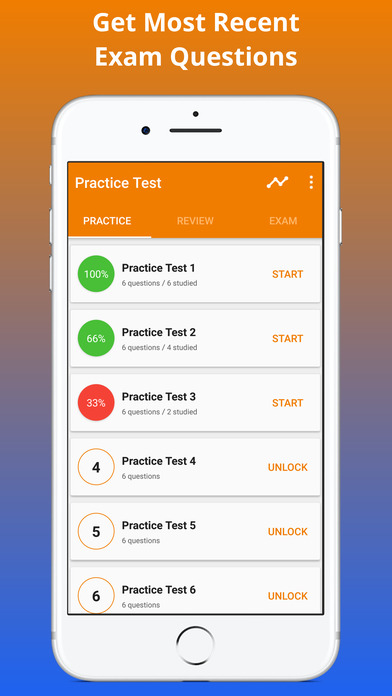
NBEO Exam Prep 2017 Edition app for iPhone and iPad
Do you really want to pass NBEO exam and/or expand your knowledge & expertise effortlessly?
This best seller mobile app help you archive your goal easily by the following unique features:
- Break learning materials into small sets of practice questions & terms
- Master each set effortlessly by many ways: flashcard, matching game, true/false, multiple choice
- Detect & separate automatically the most difficult questions
- Track your learning process on every set and exam taken
- Ready for the Exam by Exam Simulator
Premium Features:
+) Lifetime access to all Practice Questions & Terms prepared by EXPERTS for the most current exam.
+) Unlimited access to the EXAM BUILDER & SIMULATOR.
+) Automatically FILTER your most difficult questions.
+) PROGRESS TRACKING for every question & exam taken
+) Lifetime support & updates
Free version:
+) Hundreds of practice questions & terms
+) 5 Free Exam Builder
+) Free Matching Game
+) Filter hardest and weakest questions
To become a professional optometrist, optometry students must pass a series of exams administered by the National Board of Examiners in Optometry (NBEO).
The primary NBEO exam includes three parts: Applied Basic Science (I), Patient Assessment and Management (II) and Clinical Skills (III). Some practitioners may also opt to take the Advanced Competency in Medical Optometry exam (ACMO).
Part I – Applied Basic Science (ABS)
This part asks 500 questions on epidemiology, patient history, symptoms, pathophysiology, clinical testing and diagnosis. This exam is conducted in four three-and-a-half hour sessions.
Part II – Patient Assessment and Management (PAM)
Patient Assessment and Management is a written exam that involves 30 patient-centered scenarios. PAM is offered in two three-and-a-half hour sessions. Candidates are presented with patient history and clinical data with a visual, followed by multiple choice questions about the case. Questions may involve basic scientific principles, public health issues, law, ethics or treatment and management of ocular diseases (TMOD). Students will be asked about diagnosis, assessment, treatment or all three. Cases will center either on disease or trauma, or refractive or functional conditions.
Part III – Clinical Skills
This part includes a four-station Clinical Skills Examination. During the Clinical Skills Examination, candidates examine four patients, each for 30 minutes at different stations, and are evaluated on a total of 19 clinical skills throughout:
Station 1: Case History and Patient Communication; Near Cover Test; Binocular Extraocular Muscle Motility Evaluation; Blood Pressure Measurement; and Ophthalmic Lens Evaluation
Station 2: Pupil Testing; Biomicroscopy; Goldmann Applanation Tonometry; Gonioscopy; Collagen Implant Insertion and Removal; and Ocular Disease Management: Patient Education
Station 3: Retinoscopy; Distance Subjective Refraction; Heterophoria and Vergence Testing at Distance; and Accommodation Testing
Station 4: Binocular Indirect Ophthalmoscopy; Dilated Biomicroscopy and Non-Contact Fundus Lens Evaluation; Soft Contact Lens Insertion, Evaluation and Removal; and Gas Permeable Contact Lens Insertion, Evaluation and Removal.
Disclaimer:
This application is just an excellent tool for self-study and exam preparation. Its not affiliated with or endorsed by any testing organization, certificate, test name or trademark.



